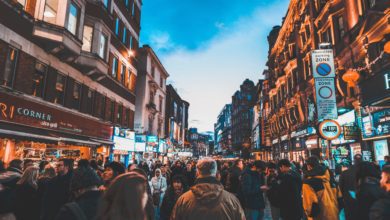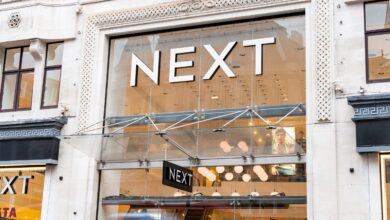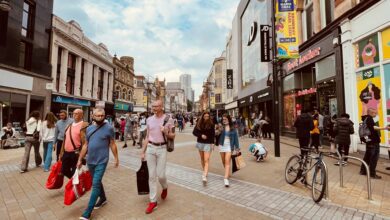Why the mood economy is shaping the retail landscape
At the heart of this so-called ‘mood economy’ are Gen-Z and millennials because, as digital-native consumers, they don’t wait for a birthday or a seasonal sale

Register to get 1 free article
Reveal the article below by registering for our email newsletter.
Want unlimited access? View Plans
Already have an account? Sign in
Retail therapy is nothing new. For decades, shoppers have found comfort in the act of buying here and there to lift their mood, mark a moment, or simply to reclaim a sense of control. But lately something feels different in Britain’s buying habits, and it runs deeper than the occasional treat.
In a year where wallets feel lighter and stress levels higher, UK consumers are, surprisingly, leaning into retail as a remedy. Be it a bouquet of flowers or a handmade bar of chocolate, these aren’t extravagant gestures, but together, they now represent a £41bn market powered by emotion, according to a recent report from global gifting marketplace Flowwow.
At the heart of this so-called ‘mood economy’ are Gen-Z and millennials because, as digital-native consumers, they don’t wait for a birthday or a seasonal sale. They shop when they feel joy, boredom, stress or nostalgia – Flowwow’s report found that a song can prompt a purchase just as much as a scroll through TikTok or a fleeting change in the weather.
In July 2024 alone, 88% of UK adults made at least one impulse buy. Respondents to Flowwow’s report admitted that many of these purchases were sparked by something as simple as a sunny day or a moment of social energy. In other words, they were buying for how they wanted to feel, fuelling this mood economy.
Since the pandemic, the retail industry has been warned that consumers are more cautious, more price-sensitive, more selective. And yet, here’s the paradox: even in a period of low confidence and rising financial pressure, people are still spending. Not recklessly, but reflexively. If emotional spending is cutting through the noise of restraint, could this indicate a shift towards the mood economy defining the trajectory of future retail?
A GlobalWebIndex (GWI) survey found that 41% of UK Gen-Z and millennials make an impulse online purchase every two to three weeks.
While the age-old idea of wellness comes in the form of a gym pass or green juice, the new one is shaping up to be buying a bouquet of peonies on a rainy Wednesday that only lasts a week. Flowwow has identified this as ‘self-gifting’ and is a subset of the wider mood economy umbrella. It is characterised by small, quiet purchases that are not made to impress other people.
“Emotional spending is less about excess and more about indulging in small pleasures,” says Slava Bogdan, chief executive and co-founder of Flowwow. “These aren’t lavish splurges but accessible moments of joy such as flowers, treats or handmade gifts. They deliver a quick dopamine boost and emotional relief.”
This phenomenon has been observed outside of Flowwow’s recent report. A GlobalWebIndex (GWI) survey found that 41% of UK Gen-Z and millennials make an impulse online purchase every two to three weeks. This rises to 48% among daily TikTok users, while the figure is only 10% for Baby Boomers.
Meanwhile, Euromonitor’s global consumer research found that some 73% of consumers say anxiety influences their retail behaviour.
“Younger consumers are drawn to emotional gifting as part of a wider shift towards self-care and wellbeing. Gifting has become a way to nurture mental health and personal fulfilment, with small, thoughtful presents offering comfort and meaningful connection rather than material value alone,” Bogdan adds. “Social media plays a key role, with platforms like TikTok promoting trends such as ‘little treats’ and ‘dopamine decor’, encouraging spontaneous purchases as acts of self-expression and emotional uplift. Influencers shape these behaviours by framing gifting as part of identity and belonging.”
TikTok reports that 61% of users discover new brands on the app, and of those, 92% take some form of action – whether it’s clicking, messaging, or buying.
The scroll clearly has power. A scent ad or a person recommending self-care items can trigger a mod change that turns impulse into action. And suddenly, the cart is full. This is where emotion meets commerce, and social media is the engine behind it.
As younger generations continue to get the bulk of their entertainment and shopping needs met on the internet, traditional advertising will no longer sway the population.
Bogdan is convinced that the emotional resonance of seeing short-form content a la TikTok lingers longer than a call-to-action. “I have observed that several content formats perform particularly well among younger audiences,” he explains. “Native, emotionally driven content that mirrors the tone of organic posts tends to outperform polished, ad-like campaigns. User-generated content builds both reach and trust.”
The data supports it. TikTok reports that 61% of users discover new brands on the app, and of those, 92% take some form of action – whether it’s clicking, messaging, or buying. Gen Z, in particular, is 1.2 times more likely than other groups to message a brand directly after a purchase.
Even though people are clearly still treating themselves, this discourse still inevitably circles back to the low consumer confidence: while it hasn’t deterred the mood economy, it does seem to have had an effect on how consumers view luxury. Far from designer labels and status items, to this cohort of buyers luxury also means “one of a kind” because it is either handmade or otherwise distributed by an ambitious boutique.
“The meaning of ‘luxury’ in the UK is undergoing a quiet transformation,” says Bogdan. “No longer defined solely by price or prestige, luxury today is increasingly about story, substance, and emotional value. Among Gen Z and millennial consumers especially, there’s a growing preference for items that are well-crafted, ethical, and unique – not necessarily expensive, but rich in meaning.”
That’s not just talk. It’s backed by a 42% rise in orders for handmade sweets and locally arranged flowers on Flowwow. Peonies, fleeting and British-grown, are up 21% year-on-year.
That connection between mood and market is measurable, and this seasonal uplift extends beyond weather as almost 30% of UK consumers plan to spend on holidays in 2025.
Seasonal changes have traditionally influenced mood, but the current trend suggests retail is becoming increasingly responsive to consumer emotions. “Seasonal changes significantly influence consumer behaviour, often acting as emotional triggers for unplanned purchases,” says Bogdan. “Longer days and warmer weather in spring and summer tend to lift spirits and boost social activity.”
That connection between mood and market is measurable, and this seasonal uplift extends beyond weather as almost 30% of UK consumers plan to spend on holidays in 2025. The impulse is consistent: when life feels lighter, people spend more freely.
And while traditional retail relies on a calendar of campaigns and sales events, emotional spending has a rhythm of its own. Even after summer fades, consumers continue to gravitate toward modest, mood-lifting purchases. “Post-season, we observe consistent purchasing patterns marked by smaller, more frequent transactions rather than one-off high spends,” Bogdan notes. “This reflects a continued appetite for accessible luxuries that bring joy to everyday life.”
Shoppers still relish the ability to try before they buy (59%), visit multiple shops in one go (52%), or simply get out of the house for a change of scene (39%).
Despite the rise of online convenience, Britain hasn’t turned its back on the high street. Far from it. A recent survey by PPL PRS found that just 1% of respondents say they shop exclusively online. For the rest, the in-person experience still holds something digital carts can’t replicate.
In fact, nearly half of Brits (46%) say it’s the act of shopping itself – not the purchase – that gives them the real mood boost. The hum of conversation, the music playing overhead, the chance to watch people moving through the same shared space. This is emotional retailing, not so much the mood economy.
Yes, crowds remain a deterrent for some 48% of respondents to PPL PRS’ survey, and 37% are drawn to online for better deals, or, for 33% of participants, sheer convenience. But what the store still delivers is richer than price points. Shoppers still relish the ability to try before they buy (59%), visit multiple shops in one go (52%), or simply get out of the house for a change of scene (39%).
The modern retailer’s mission is unambiguous: to maintain relevance, the store must evolve into an emotional hub rather than a mere transactional space. The critical inquiry shifts beyond product demand to the desired emotional experience of the shopper. In essence, it’s not just about what consumers want to purchase but how they aspire to feel during the process.







